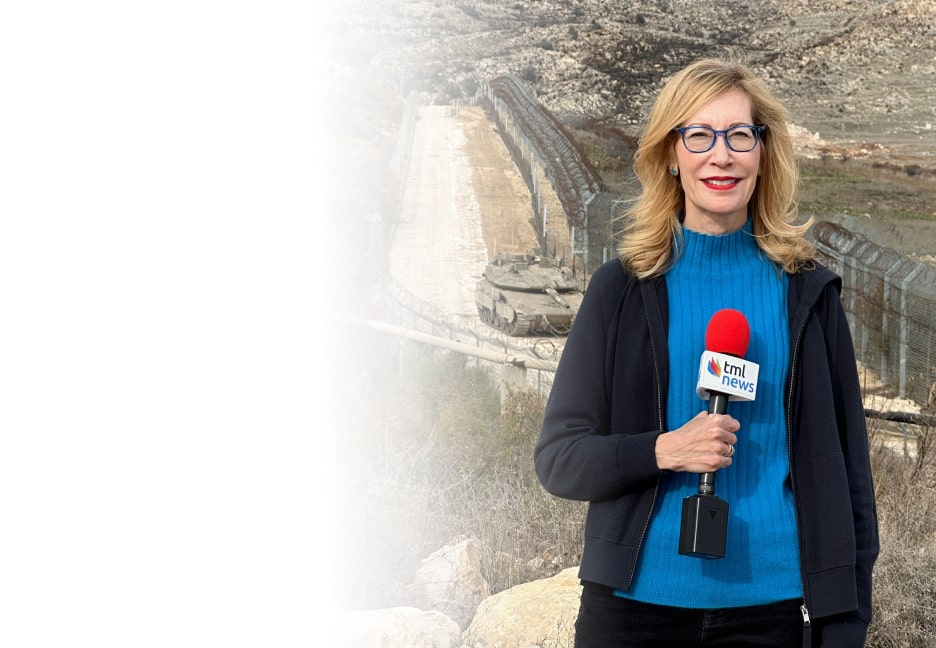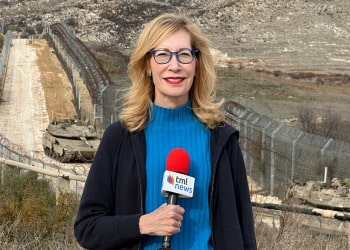Incendiary attacks in Syria, Iraq and Israel have led to severe environmental damage
As summer begins in the Middle East, environmental terrorism continues to hit several countries, including Israel, Syria and Iraq, scorching land and devastating resources.
When Saddam Hussein ordered retreating Iraqi troops to detonate over 700 Kuwaiti oil wells during the First Gulf War of 1991, the ensuing flames burned uncontrollably for over eight months until a multi-national coalition of firefighters extinguished them. The administration of then-president George H.W. Bush referred to the fires, as well as the accompanying oil spills, as “environmental terrorism.”
So despite its new-found popularization, the tactic isn’t new.
“It’s sad to say that environmental damage or sabotage is as old as war itself,” Stefan Smith, a senior program management officer at the United Nations Environment Programmer (UNEP), told The Media Line.
According to Rule 54 in a study by the International Committee of the Red Cross (ICRC) on international humanitarian law, “attacking, destroying, removing or rendering useless objects indispensable to the survival of the civilian population is prohibited,” objects such as “foodstuffs, agricultural areas for the production of foodstuffs, crops,” to name a few.
“It’s been a hallmark of recent and ongoing conflicts in the MENA [Middle East and North Africa] region,” Doug Weir, research and policy director at the United Kingdom-based Conflict and Environment Observatory (COEBS), told The Media Line.
Israel has been faced with incendiary kites and balloons launched from the neighboring Gaza Strip for over a year. The tactic by Palestinians in the coastal enclave has caused hundreds of fires in the south of the Jewish state.
On Tuesday, in response to a renewed spate of attacks, Israel’s Coordinator of Government Activities in the Territories (COGAT) announced that it had blocked fuel deliveries to Gaza “until further notice.” The shipments, coordinated with the United Nations and paid for by Qatar, were part of a 2018 truce agreement between Israel and Hamas, the enclave’s Islamist rulers.
This holiday season, give to:
Truth and understanding
The Media Line's intrepid correspondents are in Israel, Gaza, Lebanon, Syria and Pakistan providing first-person reporting.
They all said they cover it.
We see it.
We report with just one agenda: the truth.


On Wednesday, 19 fires broke out in southern Israel, allegedly due to the flammable devices. An interactive map from the Jewish National Fund indicates there have been 1,124 such fires, which have burned 11,036 dunams of land (roughly 2,700 acres) to date.
In Iraq’s Diyala, Kirkuk, Nineveh and Salahuddin provinces, farmers are dealing with fires allegedly started by Islamic State, which claimed responsibility for burning crops in a number of the areas. However, some have also placed blame on local militias.
It is particularly alarming for Nineveh and Salahuddin, the “breadbasket” of Iraq, as their wheat and barley crops account for over a third of the country’s production. Moreover, agriculture provides employment and income for more than 60 percent of the population of northwestern Iraq, according to a report by the Institute of Regional and International Studies (IRIS) at the American University of Iraq, Sulaimani.
Similarly, a series of fires in northern Syria, some allegedly started by ISIS and others by the Syrian government and its Russian allies, have destroyed crops.
“[The fires] have had an impact on food security, but have also killed many people since firefighters have mobilized locals to try to stop them. Firefighters have hardly any equipment due to restrictions from Turkey, [something that] also aids the spread of the flames,” Wim Zwijnenburg, a researcher for Dutch NGO PAX, told The Media Line.
Estimates are that tens of thousands of acres of land have been destroyed across northern Iraq and Syria.
Iraqi government officials allege that most of the flames are triggered by accident, such as disgarded cigarette butts or faulty agricultural machinery. However, Zwijnenburg said this was unlikely.
“Accidents can’t explain the massive increase and scale. There’s clearly an intention behind this. The difficulty is pinpointing a single culprit,” he said.
Last month, ISIS wrote in its al-Naba newspaper: “It looks like it will be a hot summer that will burn the pockets of the rejectionists and apostates, as well as their hearts,” referring to Muslims who do not subscribe to its interpretation of Islam.
Indeed, the region has been experiencing record-breaking hot and dry weather. The average daily high temperature in Baghdad this month has been 48 degrees Celsius (119 Fahrenheit). During a heatwave in May, parts of Israel saw similar temperatures.
According to Arnaud Trouvé, a professor of fire protection engineering at the University of Maryland, weather has significant influence on how fast a fire spreads.
“In worst case scenarios, like under high wind and dry and hot conditions, the fire can spread faster than the speed of a running person (approximately 6.7 mph),” he told The Media Line.
Additionally, record rainfall this winter led to increased vegetation growth, and therefore there is greater biomass available to burn, literally adding fuel to the fire, said COEBS’s Weir.
“The environmental conditions were particularly helpful for utilizing a tactic of this kind,” he emphasized.
Another issue is the lack of natural borders in a landscape created by agriculture, allowing the harmful byproducts of flames to spread. According to Trouvé, smoke from fire contains reduced oxygen levels, toxic products (e.g., carbon monoxide) and environmental pollutants (e.g., carbon dioxide), reducing air quality, occasionally to lethal levels.
“The evolution of the plume during a fire event is a great concern, and one worries about the plume impacting the ground in populated areas and forcing the evacuation of people,” he noted.
Despite the environmental degradation and the effects on nearby communities, CEOBS’s Weir said the nature of contemporary conflict makes it likely we will see more environmental terrorism “in the years ahead.”